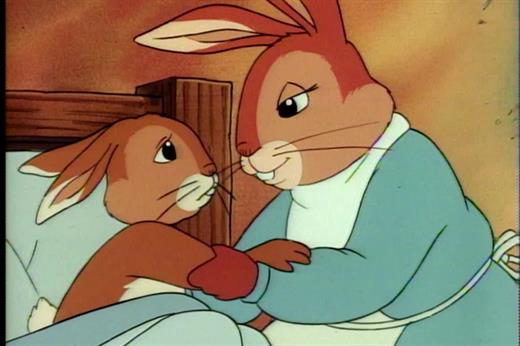

With her pet rabbit named Peter Piper in mind, she wrote a very short story "about four little rabbits", and illustrated it in the letter. Potter decided to entertain the boy, Noel, with an illustrated letter. In 1893, Beatrix Potter heard that the 5-year-old son of a friend, Annie Moore, was convalescing after scarlet fever. Scholars of literature have commented on themes in the book, such as its radical quality, Peter Rabbit's rebellious nature, and the story's ruthlessness, stating that these offer readers a chance to imagine going to similar extremes. Peter Rabbit has remained popular amongst children for more than a century and continues to be adapted into new book editions, television programmes, and films. Potter was one of the first to be responsible for such merchandise when she patented a Peter Rabbit doll in 1903 and followed it almost immediately with a Peter Rabbit board game. Since its release, the book has generated considerable merchandise for both children and adults, including toys, dishes, foods, clothing, and videos.

It has been translated into 36 languages, and with 45 million copies sold it is one of the best-selling books in history. The book was a success, and multiple reprints were issued in the years immediately following its debut. It was revised and privately printed by Potter in 1901 after several publishers' rejections, but was printed in a trade edition by Frederick Warne & Co.

The tale was written for five-year-old Noel Moore, the son of Potter's former governess, Annie Carter Moore, in 1893. He escapes and returns home to his mother, who puts him to bed after offering him chamomile tea. The Tale of Peter Rabbit is a children's book written and illustrated by Beatrix Potter that follows mischievous and disobedient young Peter Rabbit as he gets into, and is chased around, the garden of Mr.


 0 kommentar(er)
0 kommentar(er)
